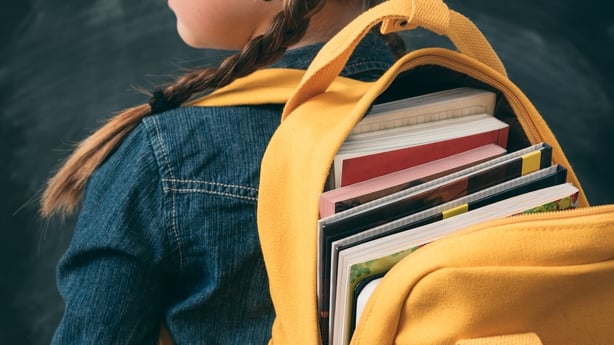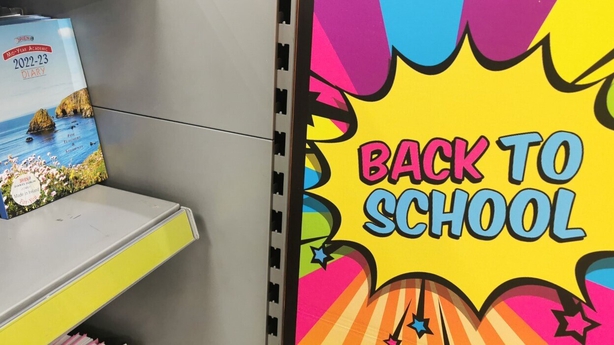It's the time of year when many parents around the country are putting the final touches to the annual back to school pilgrimage.
While there might be a sense of relief at ticking items off the list, the sense of being relieved of one's hard earned cash is bound to be altogether less satisfying.
Despite the introduction of measures to ease the financial burden of getting children classroom-ready, the overall cost of the endeavour continues to mount, with everything from 'voluntary contributions' and branded uniforms piling on additional pressures each year.
More and more parents are going into debt to cover the back to school costs while others are cutting back on non-essential items in order to keep the overall spend down.
Why is the cost continuing to mount when cost-alleviation initiatives are in place and what can be done to reduce the pressure?
Worried
The children's charity Barnardos and the League of Credit Unions (ILCU) carry out annual surveys of hundreds of parents to get an idea as to how they are coping with back to school costs and their biggest concerns.
Both report broadly similar findings in their latest reports.
Half of primary and 70% of secondary school parents told Barnardos that they were worried about meeting back to school costs this year.
Nearly half - 46% - of secondary school parents said they would dip into savings or borrow money in order to fund the return to school.
The corresponding figure for primary school parents was just under a third (30%).
Similarly, the ILCU study found that a quarter of parents were borrowing money, with one in three of those in debt to the tune of over €500.

Haven't supports been introduced to ease the burden?
They have, but mainly in the primary sector and this is why we have seen a bit of an easing in the pressure on primary parents this year.
According to the ILCU's survey, the total back to school cost for a primary school pupil dropped by €66 but still amounts to a whopping €1,086 on average.
For secondary school students, the average cost increased by €113 to €1,401 per student.
The decline in primary school costs came about largely as a result of the free school books scheme as well as the phased introduction of the hot schools meals scheme.
There is some good news for the parents of younger second-level students. This year, all of their school books and related materials are free.
The Department of Education has extended the free school books scheme to Junior Cycle students in schools across the country.
It will take time for the full benefit of those schemes to filter down to all households.
However, while very welcome, it appears to some extent to be a situation of giving with one hand while taking away with the other.
What is the other hand taking away?
While costs might be falling when it comes to books and food provision, they are mounting under other headings.
One bugbear for parents everywhere is the 'voluntary contribution'.
Four in every five participants in the Barnardos study said their school had requested a contribution which the majority felt was not exactly 'voluntary'.
Research carried out by the Competition and Consumer Protection Commission (CCPC) concluded that the average contribution being paid by parents was €167, with the average for secondary school amounting to €211 while in primary it was €129.
One in six parents said they were only made aware of the requirement after their child had started school.
After contributions, uniforms, devices, and school trips keep the meter ticking.
According to Barnardos, primary school parents spent €119 on uniforms while secondary school parents spent €211 this year.
Just over 80% of parents said that their children's school did not offer an affordable uniform option with a similar proportion expressing the belief that their school could do more to reduce the cost of their child’s uniform.
When it comes to devices, one in four contributors to the CCPC study said their child was required to purchase a laptop or tablet for their schoolwork with the average cost of €501, rising to €562 for secondary schools.
Throw in school trips - the average of which cost around €300 - and substantial bills very quickly pile up.

How are families funding the costs?
Savings, bank or credit union loans, credit cards and 'Buy-now-pay-later' are among the most popular options for financing the return to school for those who do not have immediate access to the means from their household budget.
The ILCU research pointed to nearly 30% of parents of students taking on debt to cover back to school costs.
The average debt amounted to €368 - an increase of €62 on the same figure in the 2023 study.
A third of the parents in debt said their school cost-related borrowings exceeded €500.
"Almost half of parents of school children who’ve been affected by the cost of living since the start of 2024 say they’ve cancelled or reduced non-essential service or activities to cover rising costs," David Malone, CEO of the ILCU explained, adding that some are taking on additional work to cover the costs.
Against the recent inflationary backdrop, there are signs that parents may actually be underestimating the cost of education, particularly at second level.
A study by Zurich Life published this week suggested that the undershoot could be as much as €800.
It calculated that while parents budget an average of around €2,281 per annum, it calculated the actual cost as closer to €3,100.
What can be done to reduce costs?
For primary school parents, costs have been alleviated somewhat by the school book and lunch schemes and that is now being extended into the second level sphere.
But most parents - at both levels - would like to see uniform costs and contributions being controlled to some degree.
The Department of Education introduced a circular in 2017 which directed schools to select generic school uniform items which can be purchased from multiple retailers.
If a crest is required, it should be 'iron on' or 'sew on'.
Barnardos suggests that schools should be mandated to prove that they are adhering to these principles.
There is also a back to school clothing and footwear allowance. For those who don't automatically receive it, applications are open until the end of September - although income restrictions apply.
"Now is the time for the Government to continue introducing more measures to alleviate financial stress on parents, and to compel schools to do more to keep back to school costs at an affordable level," Suzanne Connolly, CEO of Barnardos said.
The Department's 2017 circular set out that schools should consult parents on their views and suggestions on cost cutting initiatives.
Parents - one suspects - would be brimming with ideas.






